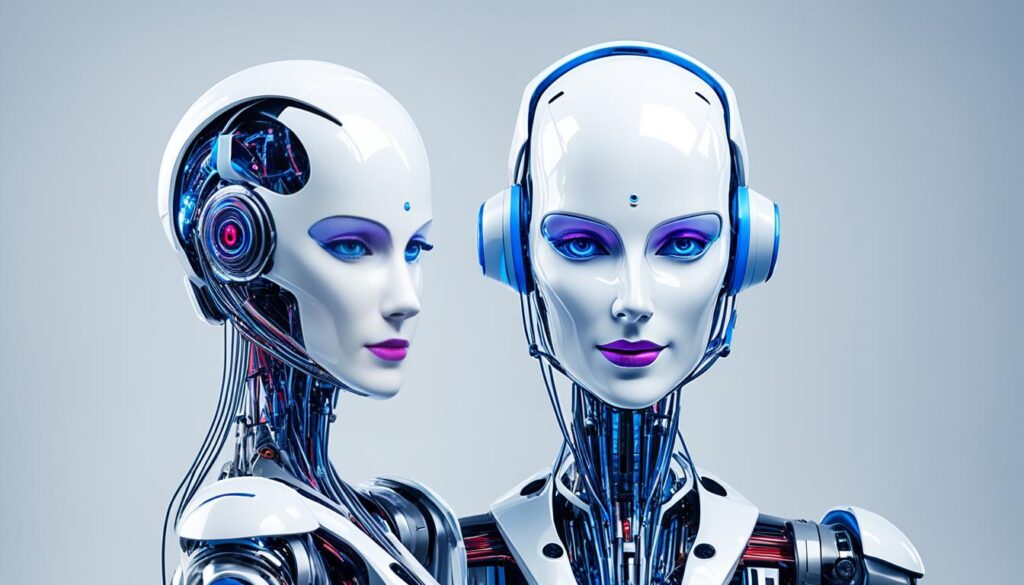In the world of AI language models, two heavyweights, ChatGPT and Bard, face off to determine which one provides the most comprehensive conversational experience. ChatGPT, powered by OpenAI’s GPT-3.5 and GPT-4 models, takes on Bard, Google’s AI-driven chatbot. Through this showdown, we will explore the capabilities of these advanced AI chatbots and compare their strengths and weaknesses. Join us to witness the clash of two cutting-edge language generation models and uncover the future of AI chatbots.
ChatGPT and Bard represent significant advancements in AI language models, leveraging natural language processing (NLP) to engage in human-like conversations. ChatGPT draws insights from an extensive dataset, including Common Crawl, Wikipedia, books, and articles, enabling it to offer a wide range of knowledge and expertise. On the other hand, Bard, fueled by the PaLM 2 model, excels at emulating human conversation, delivering detailed and precise responses akin to a digital assistant.
Stay tuned as we delve into the specifics of ChatGPT and Bard, examining their unique features and capabilities. By comparing these AI-powered chatbots, we’ll uncover the strengths and weaknesses of each, shedding light on the AI landscape and the potential they hold. Whether you are an AI enthusiast or simply curious about the future of conversational AI, this showdown will provide invaluable insights into the exciting world of AI chatbots.
What is ChatGPT?
ChatGPT is OpenAI’s flagship AI model in the form of a conversational chatbot. It leverages the power of OpenAI’s GPT-3.5 and GPT-4 models to generate human-like responses to user queries. With its advanced natural language processing capabilities, ChatGPT can engage in meaningful and interactive conversations.
One of the distinguishing features of ChatGPT is its prompt engineering functionality. This allows users to shape the conversation by providing specific instructions, such as defining the length, style, and language of the generated responses. This level of control enables users to customize their conversational experience to suit their individual needs and preferences.
ChatGPT is not limited to simple interactions; it can handle a wide range of tasks. From engaging in detailed discussions on various topics to writing essays and offering insights on complex subjects, ChatGPT showcases its versatility and adaptability as an AI chatbot.
“ChatGPT offers an immersive conversational experience, capable of generating content that mimics human-like interactions.”
By utilizing OpenAI’s cutting-edge GPT-3.5 and GPT-4 models, ChatGPT harnesses the power of massive datasets collected from sources like Common Crawl, Wikipedia, books, and articles. This vast pool of knowledge enables ChatGPT to provide detailed and accurate information in real-time to its users.
The Power of ChatGPT:
- Conversational chatbot powered by OpenAI’s GPT-3.5 and GPT-4 models
- Offers prompt engineering for customizable conversations
- Versatile and adaptable, capable of handling various tasks
- Utilizes extensive knowledge from a wide range of data sources
To illustrate the capabilities of ChatGPT, consider the following example:
| Conversation: | “Tell me about the history of space exploration.” |
|---|---|
| ChatGPT’s Response: | “Space exploration has a rich history dating back to the mid-20th century… |
| Conversation: | “Provide a summary of the latest scientific advancements in medicine.” |
| ChatGPT’s Response: | “In recent years, significant breakthroughs have been made in the field of medicine…” |

With ChatGPT, users can access a wealth of information, engage in meaningful conversations, and benefit from prompt engineering to tailor the chatbot’s responses to their specific requirements.
What is Google Bard?
Google Bard is an AI-driven chatbot developed by Google. Powered by the PaLM 2 (Pathways Language Model), Bard utilizes advanced natural language processing techniques to engage users in human-like conversations. Designed to provide detailed and concise responses, Bard functions as a digital assistant, offering accurate information and insights. With its ability to access up-to-date data from the web, Bard ensures users receive relevant information accompanied by helpful links for further context.
Key Features of Google Bard:
- PaLM 2: Google Bard relies on the PaLM 2 model for natural language processing, enabling it to understand and generate human-like conversation.
- Human-like conversation: Bard’s primary aim is to emulate human-like conversation, ensuring a seamless and engaging user experience.
- Accurate and relevant responses: With access to up-to-date information, Bard focuses on delivering accurate and reliable responses to user queries.
- Multi-language support: Google Bard offers support for multiple languages, catering to a diverse range of users worldwide.
Why Choose Google Bard for Your Conversational Needs?
“Google Bard combines powerful natural language processing capabilities with access to a vast pool of web data, delivering accurate and comprehensive responses in a conversational manner. Whether you’re looking for quick facts or need in-depth information, Bard has you covered.”
Google Bard’s commitment to natural language understanding and its ability to provide timely and relevant information make it an ideal choice for users seeking human-like conversation in an AI chatbot. Its extensive language model, PaLM 2, enables Bard to comprehend and respond to a wide range of topics, ensuring a seamless and satisfying user experience.

“Using Google Bard, you can engage in AI-powered conversations that feel remarkably human-like, all while receiving accurate and relevant information at your fingertips.”
Comparing ChatGPT and Google Bard
When comparing ChatGPT and Google Bard, it becomes clear that they have different strengths and weaknesses.
Bard excels at understanding and generating natural language, providing detailed and nuanced responses.
ChatGPT, on the other hand, showcases versatility and adaptability, able to switch between different writing styles and tones effortlessly.
While Bard taps into up-to-date information sources and offers features like source citation, ChatGPT boasts extensive knowledge and the ability to create engaging content.
Let’s take a closer look at the strengths and weaknesses of each AI-powered chatbot:
Strengths
| ChatGPT | Google Bard |
|---|---|
| • Versatile and adaptable | • Excellent understanding of natural language |
| • Ability to switch between different writing styles | • Generates detailed and nuanced responses |
| • Vast knowledge base | • Access to up-to-date information |
Weaknesses
| ChatGPT | Google Bard |
|---|---|
| • May generate less accurate responses | • Limited flexibility in writing styles |
| • Lack of real-time information access | • Less extensive knowledge base |
| • May require more context for certain queries | • Less focus on context and links |

As seen from the strengths and weaknesses outlined above, both ChatGPT and Google Bard offer unique advantages in the realm of AI-powered chatbots. It is important to consider your specific needs and preferences when choosing between the two.
Conclusion
In the battle of ChatGPT vs Google Bard, both AI-powered chatbots showcase unique strengths and capabilities. Ultimately, the choice between them boils down to personal preference and specific requirements. ChatGPT and Bard represent the forefront of AI development, pushing the boundaries of what’s possible in natural language processing.
ChatGPT, powered by OpenAI’s GPT-3.5 and GPT-4 models, offers versatility and adaptability. Its prompt engineering feature allows you to shape the conversation according to your desired length, style, and language. With its extensive knowledge, ChatGPT can engage in detailed discussions, write essays, and provide insights on complex topics.
On the other hand, Google Bard, featuring the PaLM 2 model, excels at emulating human-like conversations and providing detailed and nuanced responses. Bard’s focus is on delivering accurate information, accompanied by links for further context. It taps into up-to-date information sources and offers multi-language support.
As the field of AI continues to evolve, we can expect further advancements in both ChatGPT and Bard, as well as in the broader future of AI. These AI chatbots are just the beginning of what’s possible in decision-making and natural language processing. The future holds exciting possibilities as researchers and developers push the boundaries of AI technology. Stay tuned for the latest breakthroughs and innovations in this rapidly evolving field!
